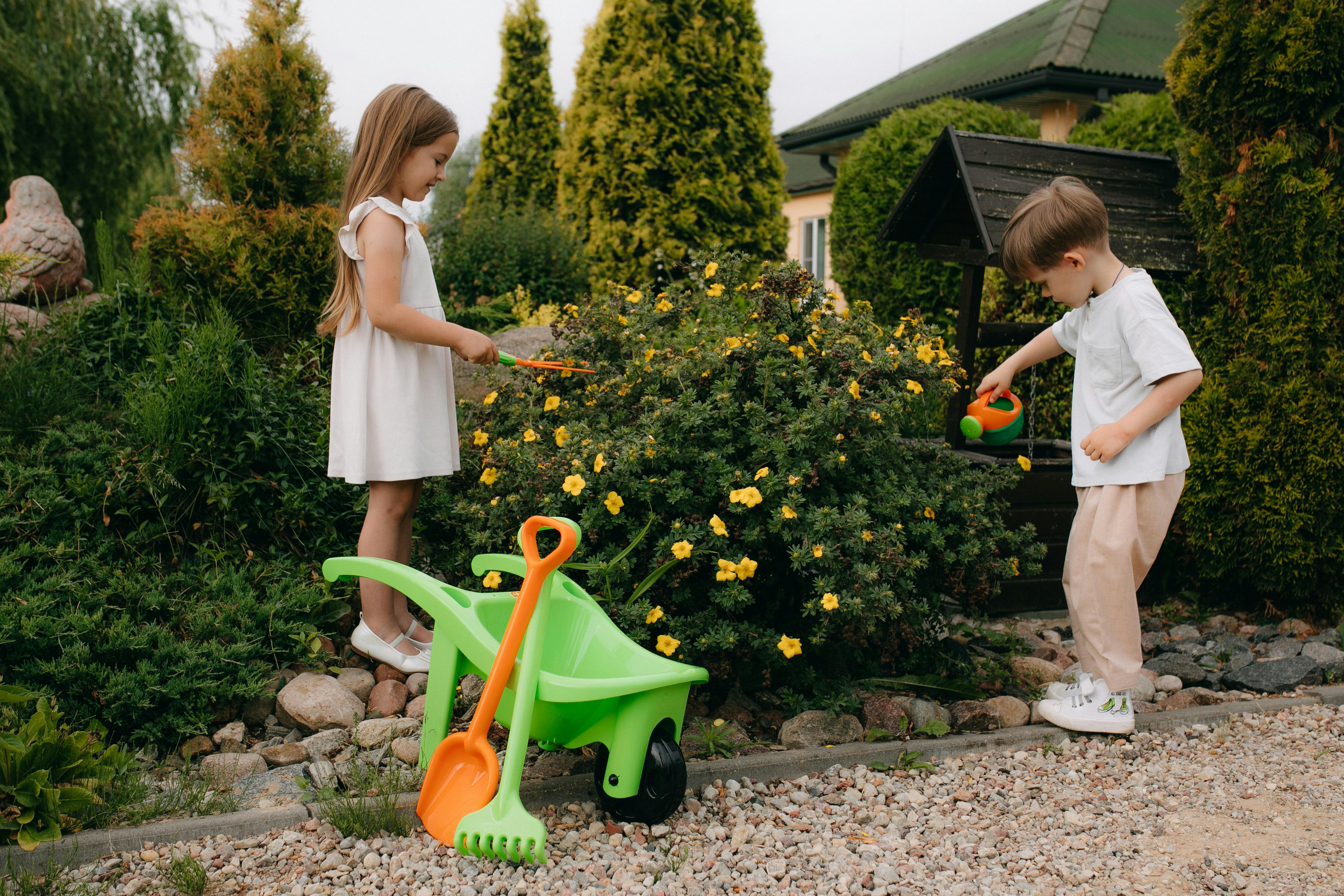Login
Join Free
Unisex Toy Trends 2025: What Retailers Need to Know About Gender-Neutral Play
Today's toy market is evolving faster than ever. Retailers are no longer just choosing toys based on age or price—they are also thinking about inclusivity and universal appeal. As parents become more aware of gender stereotypes in products, the demand for unisex toys has grown significantly. For store owners, this shift is both a challenge and an opportunity: how do you select toys that appeal equally to all children while keeping your inventory profitable and relevant?
Choosing unisex toys requires more than just avoiding pink or blue packaging. It involves understanding what truly engages children regardless of gender, recognizing social trends, and curating a product mix that reflects both modern values and strong commercial potential.
1. Understanding What Makes a Toy Unisex
Unisex toys are those that spark interest and creativity without being limited by traditional gender expectations. They focus on skills, imagination, and fun, not stereotypes. Instead of labeling products "for boys" or "for girls," retailers can look at universal play patterns—such as building, problem-solving, exploration, and art.
Examples of unisex toy categories include:
-
Building blocks and construction sets
-
Arts and crafts materials
-
Puzzles and brain games
-
Musical instruments
-
Plush animals with neutral designs
The essence of a unisex toy lies in how it encourages creativity, curiosity, and cooperation. Toys that emphasize shared experiences—like family games or collaborative building kits—naturally appeal to both boys and girls.

2. Why Retailers Should Invest in Unisex Toys
Stocking unisex toys is not just a social statement; it's a sound business move. The market data supports it: parents are increasingly seeking toys that do not reinforce gender bias, especially among millennial and Gen Z shoppers.
Here are the key advantages:
Wider audience reach – Unisex toys attract customers who are buying for multiple children, classrooms, or gifts when they're unsure of the recipient's preferences.
Flexible merchandising – Without gender restrictions, store layout becomes easier. A single display can appeal to everyone, saving space and simplifying visual merchandising.
Reduced inventory risk – Gendered toys can lead to imbalance. When one theme doesn't sell, stock piles up. Unisex lines usually move more evenly across seasons.
Enhanced brand reputation – Retailers seen as progressive and inclusive often enjoy higher customer trust and loyalty. Parents appreciate stores that care about equality and positive child development.
3. Key Factors to Consider When Selecting Unisex Toys
a. Theme and Storyline
The toy's theme is the first indicator of whether it can cross gender lines. Focus on universal stories—adventure, animals, discovery, creativity—rather than narrow or overly stylized motifs. A building set that teaches architecture or a space exploration kit will attract all children, while a heavily themed princess castle may not.
b. Color and Design
Color psychology plays a major role in perception. To maintain neutrality:
-
Use mixed or balanced colors—greens, oranges, purples, natural wood tones.
-
Avoid packaging that highlights only pink or blue.
-
Feature diverse children on packaging or marketing visuals.
-
Opt for modern, minimal design instead of gender-coded imagery.
c. Educational Value
Parents increasingly prefer toys that support learning outcomes. STEM kits, logic puzzles, or creative playsets can be marketed as gender-neutral while emphasizing cognitive skills and curiosity. Highlighting educational benefits adds professional credibility to your assortment.
d. Safety and Quality Standards
Safety remains a top concern for every buyer. Choose suppliers whose toys comply with international safety standards such as CE, ASTM, and EN71. Provide visible certification on packaging and product pages. High-quality, safe toys are trusted by all parents, regardless of theme.
e. Durability and Materials
Eco-friendly and non-toxic materials appeal strongly to today's buyers. Wooden toys, recyclable plastics, and biodegradable packaging not only fit the unisex category but also align with the growing eco-conscious trend. Durable materials also reduce customer complaints and strengthen your brand reliability.
f. Age Range and Skill Level
Choose toys with wide age applicability. A set suitable for ages 3–8, for example, can serve multiple family members, making it more flexible for buyers. Avoid overly specific toys that limit your audience.
g. Price Range and Margin Balance
Unisex toys should align with your market positioning. Keep a healthy mix of affordable impulse items and premium educational kits. Evaluate wholesale costs, potential markups, and packaging options that improve shelf appeal. When possible, offer bundle sets to raise the average transaction value.

4. Trends Driving the Unisex Toy Movement
Several global trends have made unisex toys not just a niche but a mainstream expectation.
Gender-neutral parenting: Modern parents are less likely to restrict children's play choices. Many deliberately seek neutral options to encourage creativity.
STEM and educational focus: Science and learning-based toys have universal appeal, creating a bridge between fun and education.
Sustainability: Eco-friendly toys often come in neutral colors and materials, naturally fitting the unisex segment.
Collaborative play: Toys that encourage teamwork—board games, puzzles, building kits—fit perfectly into the gender-neutral category.
By aligning your selection with these macro trends, your retail business can stay relevant and forward-looking.
5. How to Merchandise and Promote Unisex Toys
How you display and market your unisex range influences how customers perceive it.
In-store merchandising tips:
-
Dedicate a "For Every Child" section highlighting neutral products.
-
Mix categories—combine educational toys with plush or outdoor items—to create an inclusive visual impact.
-
Use signage that emphasizes imagination, learning, or creativity rather than gender.
Online marketing ideas:
-
Replace "boys' toys" or "girls' toys" with "shop by interest" filters like "building," "outdoor fun," "arts & crafts," or "learning toys."
-
Include diverse photos showing children of different genders playing together.
-
Write product descriptions that focus on play value and benefits rather than appearance.
-
Share blog content or buying guides explaining why unisex toys matter—this helps build trust with parents and educators.
Social media and community engagement:
-
Encourage parents to share photos or reviews of their kids enjoying your unisex toys.
-
Collaborate with educators or family bloggers who promote inclusive play.
-
Use hashtags like #PlayForAll or #GenderNeutralToys to reach like-minded audiences.
How Zhorya Supports Retailers with Quality Unisex Toys
When it comes to sourcing unisex toys that combine quality, creativity, and safety, Zhorya stands out as a trusted partner. With one of the most extensive toy collections in China — over 1.8 million products — Zhorya offers retailers a wide range of options, from educational kits and building sets to art supplies and electronic learning toys.
As a professional toy exporter, Zhorya emphasizes both innovation and compliance. Every toy is designed with child safety and universal appeal in mind, making them ideal for retailers who want to stay ahead of global market trends. Zhorya also provides flexible customization services, allowing clients to add their own branding, packaging, or design elements.
Whether you manage a toy shop, an online store, or a wholesale distribution network, partnering with Zhorya ensures access to top-quality unisex toys that reflect modern values and strong commercial potential.

Conclusion
Choosing unisex toys for your retail store is more than just following a trend — it's about recognizing the values and expectations of today's families. Gender-neutral toys foster inclusivity, creativity, and learning for every child, while helping your business appeal to a broader market. By focusing on quality, design neutrality, and educational purpose, retailers can build a toy selection that satisfies both children and parents.
With reliable partners like Zhorya, sourcing high-quality unisex toys has never been easier. As the global toy industry continues to evolve, now is the perfect time to embrace inclusivity as a cornerstone of your retail strategy.

 Русский язык
Русский язык 中文
中文